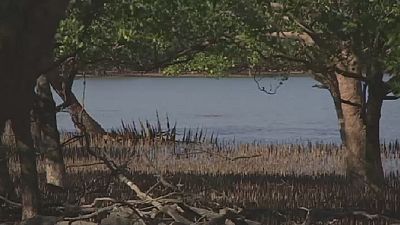Australia
Swampy, muddy and full of mosquitoes. Mangroves offer an environment not entirely pleasurable for many. But for a mangrove researcher at Charles Darwin University, it is worth a visit.
For Madeline Goddard, ecosystems such as the one in northern Australia are essential to the survival of the planet.
“I think historically, they’ve had a rough patch, but I think the more we learn about them, the more we discover their importance and how many ecosystem services they provide’‘, Goddard said.
In addition to providing habitat for marine life, mangrove forests are a reservoir of carbon.
“So they absorb all this sunlight, convert it into energy, grow the leaves and, yes, the carbon stays in the system. He falls off the tree, falls to the ground, buries himself, and the carbon stays in the mud”, she added.
As the global climate warms, and polar ice caps melt, the “sea bed” is expected to rise around the world. Thus encompass many tropical mangroves by the end of the century, if they do not adapt.
Expert say the solution lies in protect the surrounding land so that mangrove forests can extend inland.
“What is really crucial is that they can also move inland, because sea level rise increases the time of flooding, so the area behind the mangroves is a place where they can settle’‘. Goddard said.
This could only solve the tip of the iceberg, as many coastal environments remain threatened by global climate change.
AP














Go to video
84% of world's coral reefs affected by worst coral bleaching event in history
02:19
In Ghana, an illegal settlement turned a forest reserve into a criminal city
04:52
Acid spill devastates Zambia’s Kafue River
05:03
Rare painting by British street artist Banksy goes on auction in London
05:13
COP16: UN Biodiversity Conference resumes work in Rome
01:00
Elephant herd relocated to new 21-hectare enclosure at Werribee Zoo